Have you noticed more people wearing face masks lately? If you have, you’re right.
With an uptick in respiratory viruses across the States, health experts again recommend getting back in the habit of wearing face masks in public. And when we say “experts,” we’re not just talking about the odd doctor here and there.
A New York Times article last month reported, “Masks are back, and this time, they’re not just for COVID-19. A ‘tripledemic’ of the Coronavirus, influenza, and respiratory syncytial virus known as R.S.V, sweeping through the United States, has prompted several cities and counties, including New York City and Los Angeles County, to encourage people to wear a mask in indoor public spaces once again.”
The article goes on to reference the Centers for Disease Control and Prevention (C.D.C.) estimates that, so far this season, there have been “at least 25 million illnesses, 270,000 hospitalizations, and 17,000 deaths from flu.”
Dr. William Schaffner, professor of preventive medicine at the Vanderbilt School of Medicine, urges anyone living in a high-risk household to “put your mask back on when in public places.” On the other side of the country, at the University of Washington School of Medicine, Dr. Helen Chu, an associate professor of allergy and infectious diseases, puts it more strongly. “I think it’s a good time to mask, given where we are right now with hospitals being at very close to capacity, especially in pediatric hospitals with R.S.V and with flu.”
And in case you’re still on the fence about whether wearing a face mask helps reduce the transmission of respiratory illnesses, the Annals of Internal Medicine conducted a randomized cluster trial to investigate whether…”[the] use of facemasks prevents…transmission of influenza.”
Along with regular and frequent hand washing, the study concluded, “Hand hygiene and face masks seemed to prevent household transmission of influenza virus when implemented within 36 hours of index patient symptom onset. These findings suggest that nonpharmaceutical interventions are important for mitigation of pandemic and interpandemic influenza.”
While the number of people contracting COVID-19 is down, that’s not to say the pandemic is fully over and behind us. C.D.C.’s COVID Data Tracker’s most recent findings look like this:
- 332,212 Total new weekly cases
- 3,953 Total new weekly deaths
- 4,331 Daily average new hospitalization admissions
“The basic truth is that masks work. Whether you’re talking about COVID-19 or other respiratory viruses like R.S.V. and flu, wearing a mask will help protect you against all these respiratory viral illnesses.” – Syra Madad, Senior director of the systemwide Special Pathogens Program, New York City Health and Hospitals.
Bottom line? It’s likely time to wear your mask again.
Who Needs to Wear a Face Mask This Season?
When it comes to when one should wear a face mask, Dr. Madad recommends the following criteria if you’re in:
- Close contact
- Crowded spaces
- Confined places
Traveling on planes, trains, and public transportation certainly qualifies, as do stores and restaurants (until you start eating), public meetings, and classroom settings.
But it’s not just where you are that influences whether or not you should wear a mask. Four groups are particularly vulnerable to the spread of infectious diseases, including influenza, colds, and the novel Coronavirus (COVID-19).
- Children under five
- Pregnant mothers
- Adults over 65
- Those with compromised immune systems
Having children under five wear a face mask to protect themselves is unrealistic. Instead, the best protection for your little ones is to get them a seasonal flu shot once they are six months and older.
Flu shots provide six to eight months of protection starting two weeks after getting the shot. Shots are available at most pharmacies, health clinics, and doctor’s offices. The quality of flu shots doesn’t vary wherever you receive a shot — every facility offers the same vaccine.
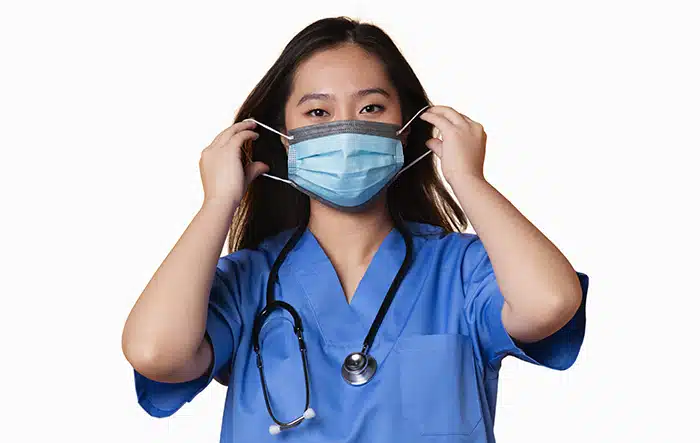
Doctors at the Pediatrix OB Hospitalist Program are seeing more pregnant women hospitalized with the flu and strongly echoed the C.D.C.’s recommendations to call 9-1-1 right away if you are pregnant and have the following symptoms:
- Trouble breathing or shortness of breath
- Ongoing pain or pressure in the chest or abdomen
- Ongoing dizziness, confusion, or listlessness
- Seizures
- Decreased urine output
- Severe muscle pain
- Severe weakness or unsteadiness
- Fever or cough that improves but then returns or gets worse
- High fever that stays over 104 F despite Tylenol®
- Little or no movement from your baby
The tripledemic is also raising the risk for adults over 65. Dr. William Schaffner, medical director for the National Foundation for Infectious Diseases (NFID), notes that “Unfortunately, older adults, those generally 65 years and older, are at distinctively increased risk of the complications and are more susceptible to severe disease due to all three of these viruses.”
This is partly due to aging immune systems getting weaker. As people age, they’re also more likely to acquire underlying chronic illnesses that predispose them to:
- Heart disease
- Lung disease
- Diabetes
- High blood pressure
Of course, you don’t need to be over 65 to experience a compromised immune system. Immunocompromised people are more likely to get sick with COVID-19, influenza, and R.S.V. or be sick for longer periods.
There are ways to protect yourself or your family members if you are in one of these more vulnerable groups. The best ways to take extra care are to stay up to date with COVID-19 vaccines, stay away from “poorly ventilated or crowded indoor settings,” wash your hands with soap and water, use hand sanitizers made of at least 60% alcohol, and wear a “well-fitting, high-quality mask.”
Do Face Masks Really Protect You?
By wearing a face mask, you create a physical barrier that prevents droplets and other airborne particles from entering your mouth or nose. This helps reduce the spread of disease from person to person.
There is growing evidence that wearing a face mask can reduce the spread of COVID-19. In particular, one study showed that people wearing a face mask had an 86% reduction in their risk of becoming infected with the virus. Additionally, some studies have found that wearing a face mask can reduce the transmission of other illnesses, such as the flu.
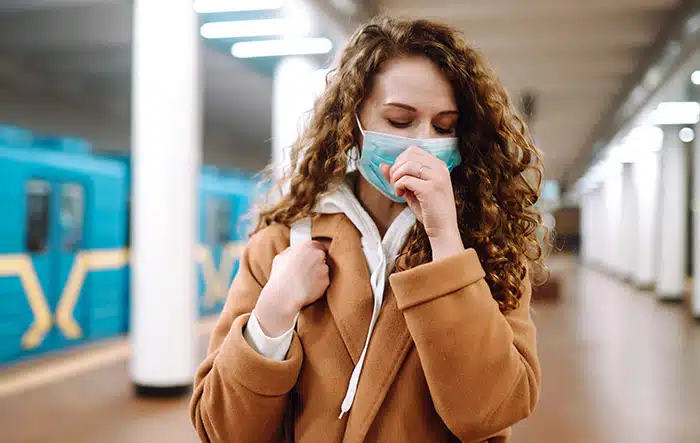
Face masks can also be effective in preventing yourself from getting sick. Research suggests that wearing a face mask can reduce your risk of infection by as much as 90%. This makes sense since a face mask creates a barrier between your mouth and nose and the germs you may encounter.
Face masks can also help to protect others around you, even if you don’t have any symptoms of illness. By reducing the number of droplets released into the air when you cough or sneeze, you can decrease the chances of those around you from being infected.
Are All Face Masks Created Equal?
To put it in a word — no.
While the most crucial feature of a face mask may be wearing it, there are distinct and critical differences between one type and another. The alphabet soup of masks spans from ones that do little more than keep dust and large particles out of your respiratory system to ones that filter up to 95% of airborne particles.
Even masks that offer little more protection than filtering out large droplets are better than no mask at all, but the better a mask can filter large droplets and aerosols, the more protection you will experience.
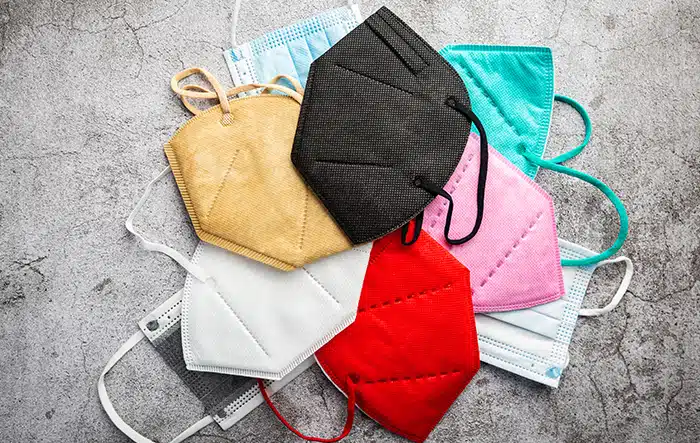
According to Business Insider, current research ranks the worst to the best face coverings in the following order:
| Type of Covering | Efficiency at Filtering Large Droplets | Efficiency at Filtering Aerosols | Where It Can Be Worn |
| Scarf, a bandana, or neck gaiter | 44% | 49% | As a last resort |
| Natural silk | 56% | 49% | Outdoor areas |
| Mask with a built-in valve or vent | 90% | 90% | Never (doesn’t protect others) |
| Hybrid mask | 96% | 94% | Public, indoor, and/or crowded settings |
| 100% cotton t-shirt | 97% | 51% | Outdoor areas |
| Tea towel or dishcloth | 98% | 51% | Outdoor areas |
| Surgical mask | 98.5% | 89.5% | Healthcare settings |
| Two-layer cotton mask | 99.5% | 82% | Public, indoor, and/or crowded settings |
| N95 mask (N99, N100, P95, P99, P100, R95, R99, and R100) | 99.9% | 95% | Healthcare settings |
How to Wear a Face Mask
Not only does it matter what type of face mask you choose to protect yourself with, but it also matters how you wear it. The C.D.C. stresses, “To protect yourself and others from COVID-19, C.D.C. continues to recommend that you wear the most protective mask you can that fits well and that you will wear consistently.”
Their recommendations for fit include checking that it fits “properly.” Properly means the mask fits snugly over your nose, mouth, and chin.
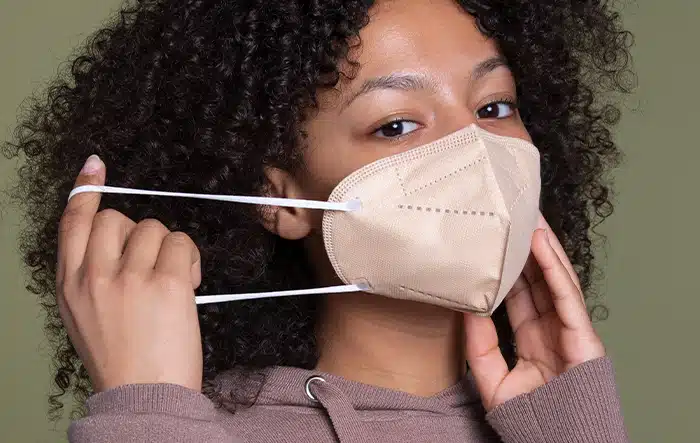
Ways to ensure the mask hits these marks include:
- Checking for any gaps around the outside edges of the mask
- Making sure there’s no air flowing from near your eyes or the sides of the mask
- Feeling warm air coming through the front of the mask
- Seeing the mask material move in and out with your breath
Do not wear masks that
- Have a gap around the sides of your face and nose
- Has exhalation vents, valves, or other openings
- Are made from a single-layer fabric
- Made from thin fabric that doesn’t block the light
- Are wet with dirty material
- Are hard to breathe in
- With other masks or respirators
Before you put on a face mask, it’s recommended that you wash your hands with soap and water for at least 20 seconds or use a 60% alcohol-based hand sanitizer. You’ll also want to check the mask for any damage — if it has rips or tears or shows signs of wear, you should throw it away and get a new mask.
Wearing Surgical Masks Correctly
Surgical masks typically have three layers: an outer fluid-repellent layer, a high-efficiency middle filter layer, and an inner absorbent layer. In addition, some surgical masks have instructions that should be clear and easy to follow.
Most don’t come with instructions, and while it might seem self-evident how to wear a surgical mask, we have some helpful tips on how to put them on in a way that best protects your respiratory system.
Almost all surgical masks come with one colored side (usually blue) and one white side. The blue side is intended to face out, while the white side is intended to be worn against your face.
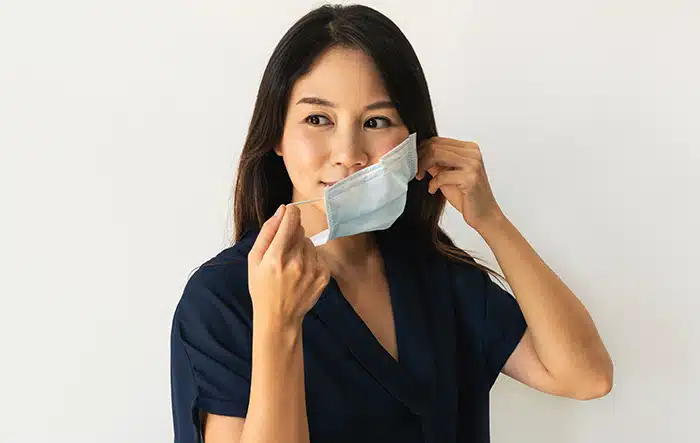
Having said that, some masks are white on both sides, making it hard to determine which side should be worn against your face. The softer side of the mask is made with a moisture-absorbant layer and goes against your face. The rougher side always faces outwards.
While it may seem intuitive to use how the ear loops are attached to decide which way to place the mask on your face, that won’t help you. It seems there is a lack of consistency among manufacturers, with some attaching the loops to the outside of the mask and some attaching them to the inside of the mask.
Place the ear loops around your ears. If you find the loops, don’t ensure the mask sits snugly against your face, you can twist the loops once in front of your ears. This will tighten up any gaps between the mask and your face.
Wearing Fabric Masks Correctly
The table in the previous section was compiled from several sources: Democritus University of Thrace; Duke University; Journal of Hospital Infection; Public Health England; University of Chicago, and the University of Illinois at Urbana-Champaign.
You may have noticed the grades given to a two-layer fabric mask: a 99.5% efficiency at filtering out large droplets and an 82% efficiency at filtering out aerosols. These masks are rated for public, indoor, and/or crowded settings.
We’re delighted to report that our MyAir fabric masks beat both those grades. The MyAir mask blocks 99.997% of airborne pathogens (the bacteria and viruses that cause illness) and blocks allergens, pollen, and airborne contaminants as small as 0.1 microns.

Our masks are unique in several ways. Not only do they block airborne particles, but they also retain 88% of moisture from your exhaled breath. This hydration support keeps your nose and throat comfortable and minimizes the amount of dry air you breathe.
Every single cell in your body needs water to function properly, and dry air puts a lot of strain on your body. Increasing susceptibility to germs, irritating sinuses, and aggravating allergies and other conditions is also a significant contributor to jet lag and fatigue.
MyAir masks are made of super lightweight and stretchy fabric on the facing-forward side, while a replaceable filter comes with an adhesive strip that presses onto the inside of the mask nose piece.
To wear a MyAir mask properly, simply hold it up to your face, pulling it up under your chin. Then, twist the ear loops, slip them over the ears, and adjust the nose piece. Or, you might find it easier to first adjust the nose piece, then twist the ear loops back and hook them over your ears.
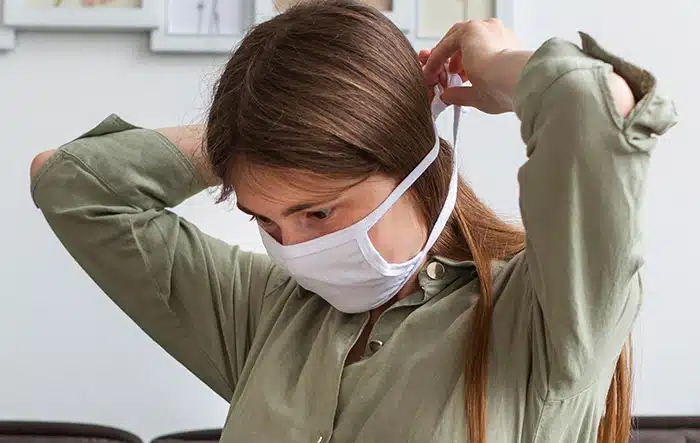
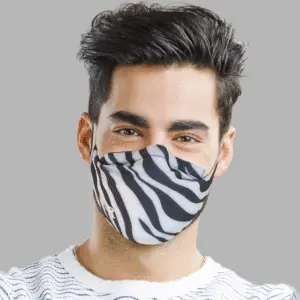

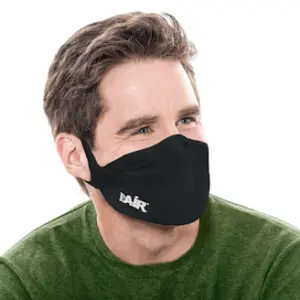
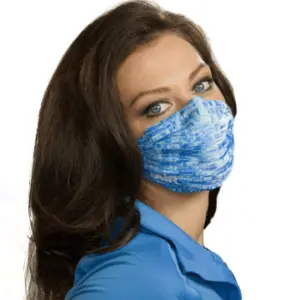
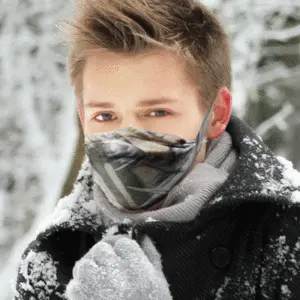
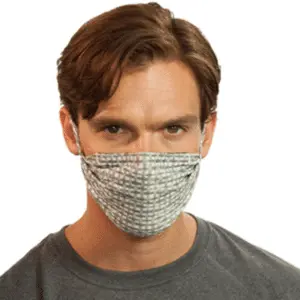
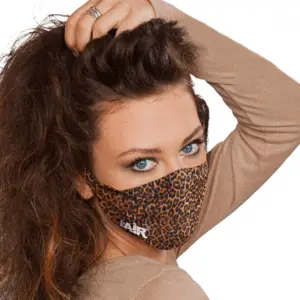
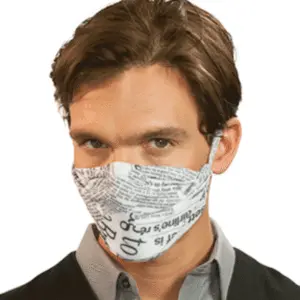

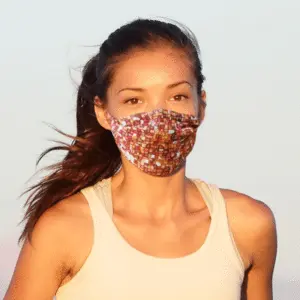

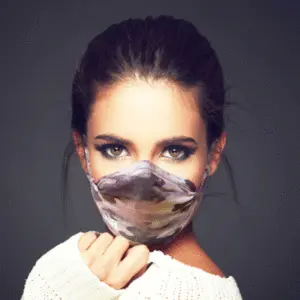
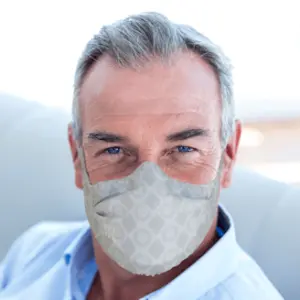



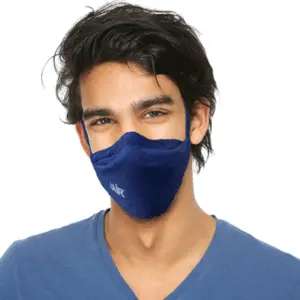

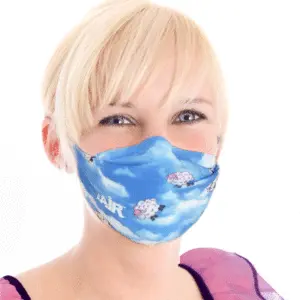
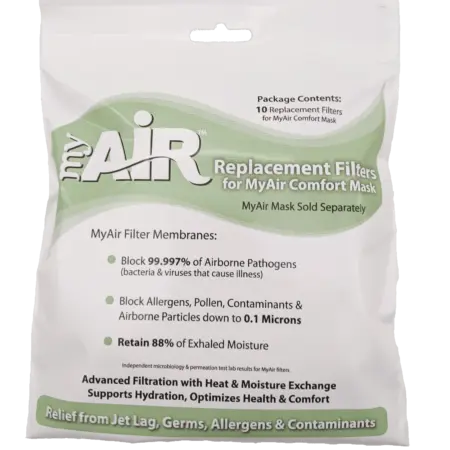
0 Comments